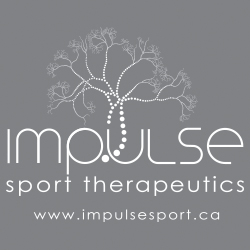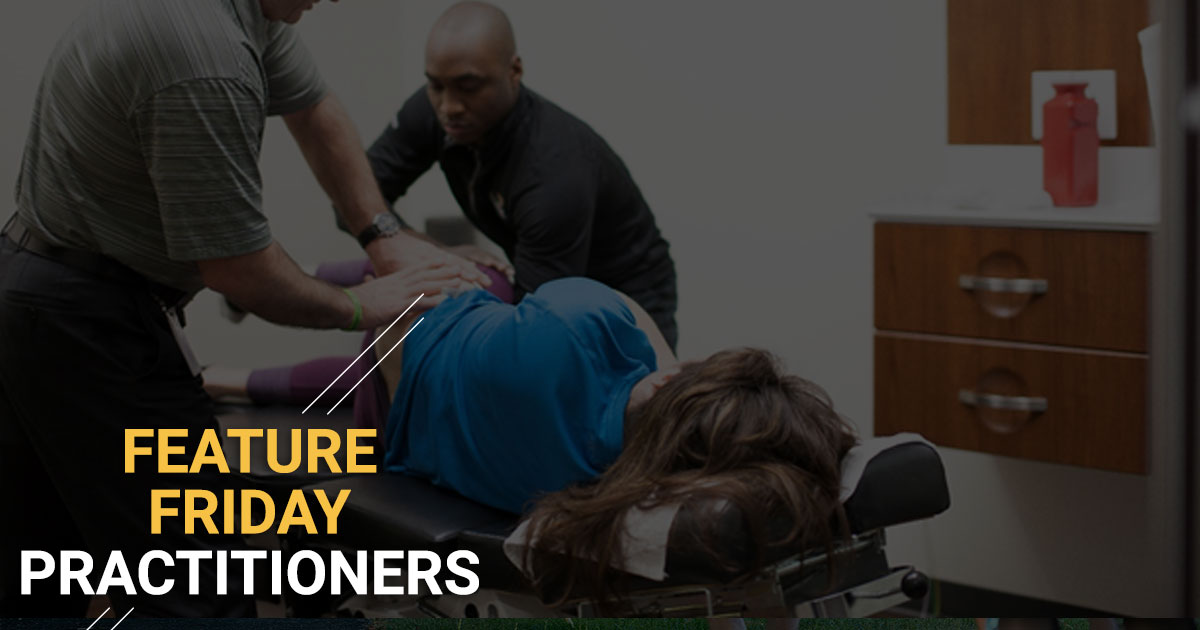
We’ll be talking with various local Sports Practitioners over the next few weeks for our #FeatureFridays. This week, we’re talking to Chris Napier at Restore Physiotherapy – check it out!
PHYSIOTHERAPY FOR RUNNERS
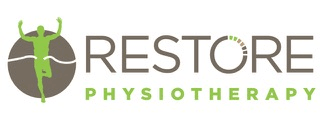 Physiotherapists are highly qualified health professionals whose main goal is to help people get better and stay well. Using advanced techniques and evidence-based care, physiotherapists assess, diagnose, treat, and prevent a wide range of health conditions and movement disorders. Physiotherapy helps repair damage, reduce stiffness and pain, increase mobility and improve quality of life. Physiotherapy extends from health promotion to injury prevention, acute care to rehabilitation. Physiotherapists, put simply, are the experts when it comes to assessing and teaching movement.
Physiotherapists are highly qualified health professionals whose main goal is to help people get better and stay well. Using advanced techniques and evidence-based care, physiotherapists assess, diagnose, treat, and prevent a wide range of health conditions and movement disorders. Physiotherapy helps repair damage, reduce stiffness and pain, increase mobility and improve quality of life. Physiotherapy extends from health promotion to injury prevention, acute care to rehabilitation. Physiotherapists, put simply, are the experts when it comes to assessing and teaching movement.
At Restore Physiotherapy, we believe in one-on-one treatment time with plenty of time dedicated to assessing the injury to get to the root cause. This is followed by a comprehensive treatment program utilizing exercise, manual therapy, and movement re-education to improve symptoms and prevent re-injury. As a running specialist, I take a detailed history of the problem as the runner presents it (location/type of pain, duration, aggravating factors, etc.) paying careful attention to details about changes in training, footwear, surface, and other variables. Since most (or arguably all) running injuries are a case of “too much, too soon” any sudden change in one of these variables can present an opportunity for injury to develop.
A gait analysis on a treadmill is also an important part of the assessment of the runner to determine if biomechanical factors are involved in the manifestation of the injury. These risk factors may not be evident on a simple physical examination so a gait analysis is not to be left out. Running injuries often develop when tissues break down due to poor form or maladaptation to the stresses placed on them. While careful progression of training volume and intensity can prevent most injuries from occurring, runners are known to push themselves and train through early signs of injury. Poor biomechanics exacerbated by a state of fatigue can result in typical overuse injuries such as Achilles tendinopathy, patellofemoral pain syndrome, iliotibial band (ITB) syndrome, and medial tibial stress syndrome (“shin splints”).
When assessing a runner on the treadmill, I look for biomechanical risk factors ranging from a slow cadence and increased vertical impact force to poor geometry in the lower extremities at foot strike. Treatment may consist of correcting faulty mechanics (only if they are determined to be involved in the injury), changing stride characteristics like cadence or stride length, and strengthening the appropriate tissues to withstand the repeated forces of running. Throughout the treatment process, the gradual overload principle must be followed, being sure to increase overall workload by approximately 10% per week. Too much and the runner may break down; too little and the body will fail to adapt to greater loads.
Here are some tips on how to prevent the most common running injuries:
- Identify any recent changes in your training (volume, intensity, surface, footwear, etc.) as most injuries are a result of “too much, too soon”
- In the initial stages of injury, stop running if the pain changes your running gait or increases as you run. If you are able to run with mild pain, and without changes to your mechanics, it may be ok to continue running through the injury—consult your physiotherapist
- Running is a one-legged sport: focus on exercises that improve eccentric control of the body over the stance limb (single leg, weight-bearing, dynamic, plyometric)
- Have a gait analysis performed and correct any significant gait abnormalities with gait retraining if considered to be clinically relevant
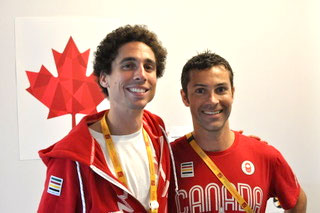
- If you’re starting to feel burned out—mentally or physically—take a week or two of easy running before a forced break due to injury occurs
Chris Napier
Sport Physiotherapist, Restore Physiotherapy
PhD Candidate (Biomechanics), University of British Columbia
Athletics Canada Physiotherapist
My decision to accept the opportunity to serve as the Director of Chiropractic Services in early 2013 for Fortius Sport & Health was an easy one. Working as part of a team in a state of the art facility, where collaboration, integration, and innovation are the fundamental pillars is any sports practitioners dream.
As chiropractors, we not only evaluate and treat sites of injury but look at the individual as a whole. We observe overall posture and alignment, as well as the quality of movement through sports specific actions to identify areas of dysfunction and get athletes back into the activity they love.
CHIROPRACTIC CARE FOR RUNNERS
All sports expose participants to repetitive stresses due to the repetition of similar movement patterns over and over. Running is certainly no exception. Every step, depending on how fast one is moving, will impart forces of 2 to 5 times body weight into your structure.
Every runner will attest to the common aches and pains or injuries such as plantar fasciitis, achilles tendinitis, hamstring strains, or the ever present tight glutes. Helping you manage the forces associated with running is where chiropractic comes in.
Using manual therapy, we provide detailed treatment to involve myofascial soft tissue structures and joints in combination with traditional chiropractic manipulation, when necessary, to improve mobility and musculoskeletal function. In this manner we not only assist in resolving current injury but also look to improve performance and reduce future injury occurrence.
SELF-CARE FOR RUNNERS
When we work to optimize posture, ensure muscle tone is well maintained, and joints are moving well, the body can more efficiently manage the repeated stresses associated with running. Adding daily self-care (which includes strengthening and mobilization of the major muscle groups and joints) to your chiropractic care will help to keep you injury free and enjoying your runs.
There are a number of areas to address in our daily routines, and below are a couple of my favourite stretches (downloadable PDFs).
INTEGRATED ATHLETE DEVELOPMENT AT FORTIUS
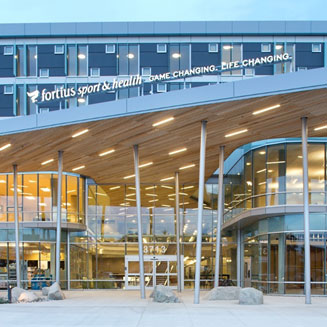 Fortius Sport & Health is an integrated athlete development centre strengthened through philanthropy and focused on optimizing athlete performance for life. Situated just outside of Vancouver, British Columbia, it is home to a state-of-the-art training facility as well an integrated team of sport medicine and science practitioners.
Fortius Sport & Health is an integrated athlete development centre strengthened through philanthropy and focused on optimizing athlete performance for life. Situated just outside of Vancouver, British Columbia, it is home to a state-of-the-art training facility as well an integrated team of sport medicine and science practitioners.
At Fortius, chiropractors work with sport medicine physicians, physiatrists, physiotherapists, kinesiologists (hydrotherapy), massage therapists, optometrists, biomechanists, physiologists, strength and conditioning coaches and dietitians to deliver precise, customized treatment and training plans for athletes of all ages and abilities.
Our chiropractors collectively have provided performance and injury care across multiple sports, including NCAA Swimming, Olympic/World Championship level Track and Field, CFL and NFL Football, Ironman Triathlon and International level soccer.
Whether you’re a professional training toward a World Championship, your first 10km, or simply wanting to walk for health, we would be honoured by the opportunity to be part of your care team, assisting you in accomplishing your athletic goals.
Visit www.fortiussport.com to learn more or to book an appointment today.
Feature Friday – March 3, 2017
Although Massage Therapy is a well embraced form of rehabilitation, its progression over the years from spa and relaxation work, to specialized therapies such as pre-natal or athletics, to being included in preventative medicine such as injury prevention, is an important awareness to have.
Many seek out an RMT when a problem arises, and of course, this is an appropriate time to get soft tissue work. Massage Therapy, however, can be used as a means to help prepare an athlete for competition, as a tool to enhance athletic performance, as a treatment approach to help the athlete recover after exercise or competition, and as a manual intervention for sport related musculoskeletal injuries (such as promoting tissue and system health before breakdown begins).
Getting injured is every active persons worst nightmare – it impairs performance, delays training and conditioning schedules during recovery, and they also hurt!. Many injuries, however, can be prevented altogether with the right rehabilitative care (in combination with a proper training program, nutrition and water intake, sleep, and equipment) and Massage Therapy can play an invaluable role! Soft tissue work such as Massage monitors muscle tone, helps to eliminate scar tissue, increases mobility, increases range of motion, reduces muscle hypertonicity, and promotes relaxation (that one is cliché but surprisingly valuable!). RMTs involved with athletics are also often competent with sport related taping, or have specialties such as Graston Technique or ART, which have traditionally been done by Physiotherapy or Chiropractic.
If you use your body on any kind of regular basis for sport, Massage and soft tissue work should be an integral part of your life, whether it be to take care of the big and small issues that get in the way of efficient and pain free movement, or to help you prevent those issues from happening in the first place.
Impulse Sport Therapeutics is a multi-disciplinary clinic with locations in West Vancouver, North Vancouver and Port Moody.


